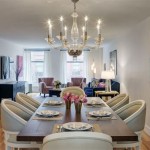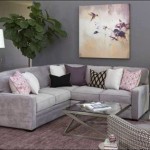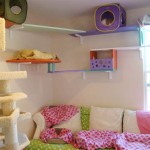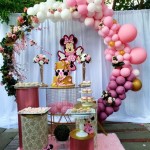How To Decorate For a Wedding Reception
Decorating a wedding reception involves a multifaceted approach that combines aesthetic vision with practical considerations. The goal is to create an atmosphere that reflects the couple's personality and style while providing a comfortable and enjoyable experience for the guests. Effective wedding reception decor requires careful planning, detailed execution, and an understanding of the elements that contribute to a cohesive and harmonious environment.
The initial stage involves determining the overall theme and style of the wedding. This decision should be guided by the couple's preferences, the venue's characteristics, and the desired level of formality. Common wedding themes include classic, rustic, modern, bohemian, and vintage. Once the theme is established, subsequent decisions regarding color palettes, floral arrangements, lighting, and other decorative elements can be made in alignment with this overarching vision.
Budgetary constraints are also a significant factor in the decoration process. It is essential to establish a realistic budget early on and to prioritize spending based on the elements that are deemed most important. Creative solutions and cost-effective alternatives can often be employed to achieve the desired aesthetic without exceeding financial limitations. DIY projects, rental options, and seasonal flowers are some strategies for managing costs effectively.
Venue Assessment and Layout
A thorough assessment of the wedding reception venue is crucial before embarking on the decoration process. This assessment should include an examination of the venue's size, layout, existing décor, and any inherent limitations. Understanding the space will inform decisions about furniture placement, traffic flow, and the optimal use of decorative elements.
The venue's size will dictate the scale of the decorations. Larger venues may require more elaborate floral arrangements, larger centerpieces, and more extensive lighting schemes to fill the space effectively. Smaller venues, on the other hand, may benefit from more minimalist decorations to avoid overcrowding and maintain a sense of intimacy.
The layout of the venue will influence the arrangement of tables, seating, and other functional elements. Consider the placement of the dance floor, the bar, the buffet or catering stations, and any designated areas for entertainment or photo opportunities. Ensure that there is ample space for guests to move around comfortably and that walkways are clear and unobstructed.
Existing décor within the venue should also be taken into account. If the venue already has attractive features, such as chandeliers, architectural details, or scenic views, these elements can be incorporated into the overall design. Conversely, if there are any undesirable features, such as outdated carpeting or unattractive walls, strategies should be employed to minimize their impact or conceal them altogether.
Lighting considerations are also paramount. Natural light can enhance the ambiance of a daytime reception, while artificial lighting can be used to create a specific mood or atmosphere in the evening. Examine the venue's existing lighting fixtures and determine whether additional lighting is needed. Options include string lights, spotlights, uplighting, and candles, each of which can contribute to the overall aesthetic.
Selecting a Color Palette and Floral Arrangements
The color palette is a fundamental aspect of wedding reception décor. The chosen colors should reflect the couple's personal style and complement the overall theme of the wedding. Typically, a primary color, a secondary color, and an accent color are selected to create a balanced and visually appealing scheme.
Consider the psychological impact of different colors when making these choices. Warm colors, such as red, orange, and yellow, can create a sense of energy and excitement, while cool colors, such as blue, green, and purple, can evoke feelings of calmness and serenity. Neutral colors, such as white, ivory, and gray, can provide a sophisticated and understated backdrop for other decorative elements.
Floral arrangements are another crucial element of wedding reception décor. Flowers add beauty, fragrance, and a touch of natural elegance to the space. The choice of flowers should be guided by the color palette, the theme of the wedding, and the seasonality of the blooms. Common floral arrangements include centerpieces, bouquets, aisle decorations, and altar arrangements.
Centerpieces are typically placed on guest tables and are designed to be visually appealing without obstructing conversation. Popular centerpiece options include tall arrangements, low arrangements, floating candles, and floral garlands. The size and style of the centerpieces should be proportionate to the size of the tables and the overall scale of the venue.
Consider seasonal flowers to optimize costs and ensure the availability of desired blooms. Spring weddings often feature tulips, daffodils, and hyacinths, while summer weddings may include roses, lilies, and sunflowers. Autumn weddings can showcase chrysanthemums, dahlias, and berries, and winter weddings may incorporate evergreens, amaryllis, and poinsettias.
Beyond flowers, consider incorporating greenery into the décor. Greenery can add texture, visual interest, and a touch of natural beauty to the space. Options include eucalyptus, ivy, ferns, and various types of foliage. Greenery can be used in centerpieces, garlands, backdrops, and other decorative elements.
Incorporating Personal Touches and Details
To truly personalize the wedding reception, incorporate details that reflect the couple's unique relationship and individual interests. These personal touches can make the event more meaningful and memorable for both the couple and their guests. Personalization can manifest in various forms, from custom signage to unique favors.
Custom signage can be used to direct guests, display messages of welcome, or highlight significant locations within the venue. Consider incorporating personalized monograms, quotes, or artwork that reflect the couple's style and personality. Signage can be created using a variety of materials, including wood, metal, acrylic, and fabric.
Wedding favors are small gifts given to guests as a token of appreciation. These favors can be personalized to reflect the couple's interests or the theme of the wedding. Common favor options include personalized candies, small plants, custom-made candles, and miniature bottles of alcohol. The favors should be thoughtfully chosen and presented in an attractive manner.
Photo displays are a visual way to share memories with guests. Consider creating a photo display featuring pictures of the couple throughout their relationship, childhood photos, or images from special events. The photo display can be arranged on a table, hung on a wall, or incorporated into a custom-designed backdrop.
Personalized table names or numbers can add a unique touch to the reception. Instead of using traditional numbers, consider using names of places that are meaningful to the couple, such as cities they have visited, favorite books, or significant landmarks. Alternatively, incorporate photos of the couple at different ages into the table numbers.
Consider incorporating elements that reflect the couple's hobbies and interests. If the couple enjoys traveling, incorporate maps, globes, and travel-themed décor into the reception. If they are passionate about music, consider using musical instruments as decorative elements or creating a playlist of their favorite songs. If they are avid readers, use stacks of books as centerpieces or create a library-themed backdrop.
Seating charts and place cards are essential for directing guests to their assigned tables. Personalize these items to reflect the overall theme and style of the wedding. Consider using calligraphy, custom fonts, or unique materials to create elegant and memorable seating charts and place cards. For example, seed packets with guest names tied to them can be creative place cards, offering a take-home gift that will grow.
Lighting, beyond its functional role, can be a powerful element of personalization. Custom gobos (projected patterns) can display the couple's initials or a meaningful design on the dance floor or walls. String lights, strategically placed, can create a romantic and whimsical atmosphere. Colored uplighting can transform the venue's ambiance to match the wedding's color scheme.
Linens are an often-overlooked detail that can contribute significantly to the overall aesthetic. Choosing high-quality linens in colors that complement the wedding's palette can elevate the table settings. Consider adding personalized touches, such as custom napkins or embroidered tablecloths, to further enhance the reception's décor.

25 Wedding Decoration Ideas For A Show Stopping Venue

20 Enchanting Wedding Decor Ideas Unique Design

39 Wedding Decoration Ideas You Ll Totally Love

Winter Wedding Decor Ideas Chic Festive

39 Wedding Decoration Ideas You Ll Totally Love

How To Decorate A Wedding Venue Themes For Venues

Reception Décor Inspiration For Every Type Of Wedding Venue

8 Modern Wedding Decor Ideas Plus Invitations To Fit Your Celebration

How To Decorate Style Your Wedding Venue Wedinspire

Wedding Venue Decorating Tips And Ideas Site Name Arabia Weddings
Related Posts







